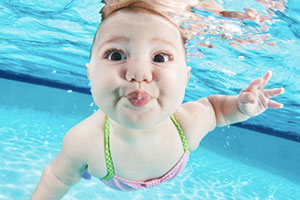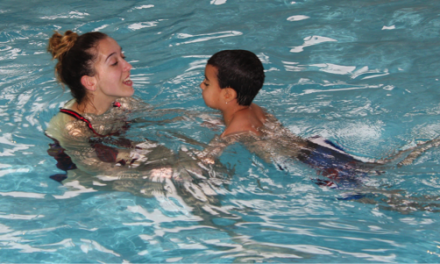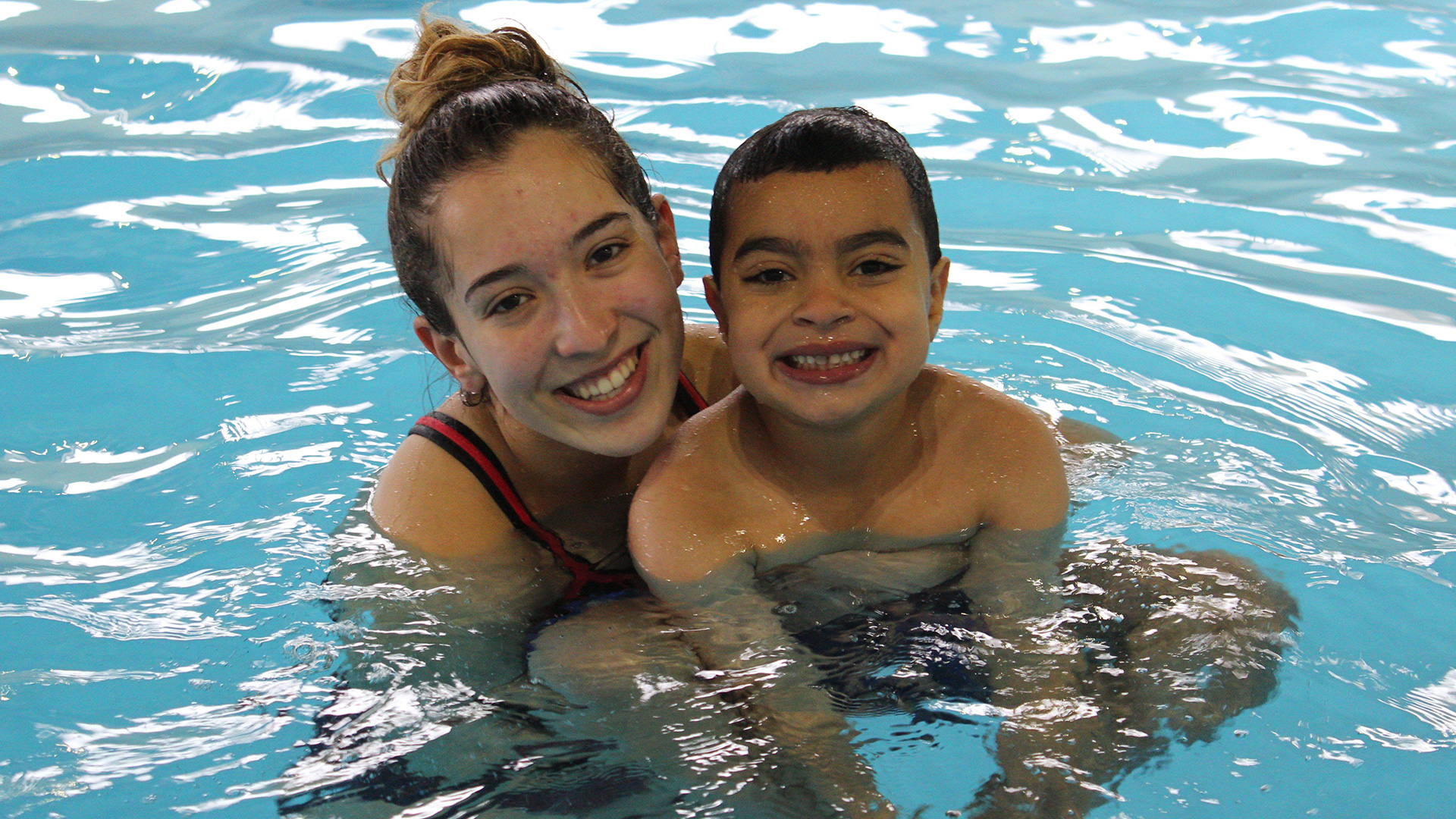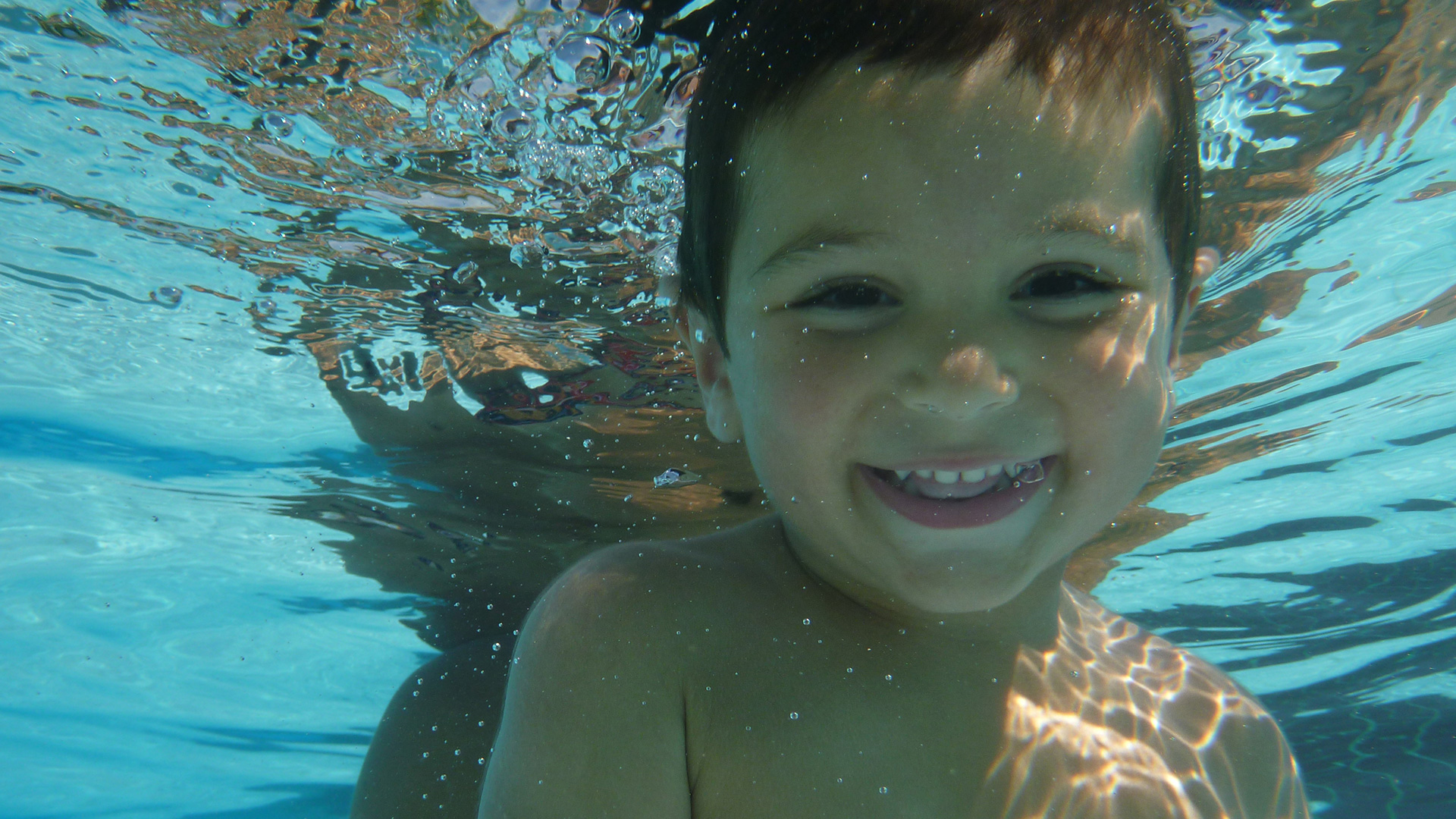I’ll never forget one of my first experiences as a swim instructor. I was 16, doing at stage as part of my swim instructor certification course. I was assisting a veteran swim instructor with her lessons, and we were working with a group of three 3 year olds, none of whom could swim. Or rather, none of whom were expected to be able to swim on their own, and thus they were not being taught how to swim on their own. We would sign a song, and hold the kids. Then the kids would jump and we would catch them. Then we would give them lifejackets and swim around the pool like 2 mother ducks and their obedient children.
Finally, I worked up the courage to ask my mentor “why aren’t we teaching them to swim by themselves”? To my surprise, the response was “kids can only swim by themselves at 4 years old”. I held my tongue out of respect for my elder, and life went on.
That experience reflected a very common myth about swimming, that learning to swim is an age-dependent milestone. Today, I will address and shatter this myth, as well as a few other common myths revolving around kids and swimming.
Let’s begin with the big one: at what age can kids learn to swim, and at what age should parents start their kids in swimming?
First, let’s explore where the common myth comes from, that kids can only swim on their own around 4 years old. There is some truth to it: around 3 and 4 years old is when most kids finally develop the strength to be able to lift their head out of the water while swimming. Similarly, 3-4 years old is when kids can start understanding and mastering complex movements, like flutter-kicking their feet while pulling with their arms (image patting your head and rubbing your tummy simultaneously).
However, these are merely limitations and should not define what the swimmer can do. There is a plethora of skills kids, toddlers and even babies can learn to do by themselves. These include, but are not limited to, floating, gliding, moving their arms and legs, holding the wall, entering and exiting the pool, propelling themselves, etc. These can be learnt by children of any age, I repeat, any age. The coolest part, is let’s say you combine a few of these skills in sequence for a 2 year old. Example: enter the pool – flip and float on your back – kick on your back across the pool – flip back onto your tummy and grab the wall – climb out.
Boom. You now have a 2 year old swimming across the pool on their own. Hold for applause.
Some might say: well how can you teach a baby or toddler these things, they can barely communicate. Right, except any experienced swim instructor will know you can communicate and teach a skill 3 different ways: verbally, visually, and kinesthetic (physical manipulation or hands on). Combine these different approaches with a large amount of repetition, and any kid can learn to swim- or at the very least to save themselves – at any age.
Myth: Kids can only learn to swim on their own around 4 years old.
Conclusion: Myth busted.
Next myth: Everyone knows that group swim lessons are more affordable than private lessons.
Or are they?
True, group lessons are more affordable on a per-lesson basis. Group lessons typically vary from roughly $8-$15 per class, depending on where you live and where you’re looking. Private swimming lessons will run you more or less $30/lesson. So group is obviously cheaper right?
Wrong.
What are parents actually paying for? For their kids to learn swimming, and ultimately to be safe in the water. Let’s focus on young kids, non-swimmers in group lessons. Any parent who has ever had their kid in group lessons at a young age has probably felt the frustration of watching their kid sit and wait for their turn for the majority of the class. Sitting. Waiting. Not swimming.
Let’s generously say a typical child will receive 25% of 1on1 attention in an $11.50 class (the average price for a group class). This assumes a generous 4:1 ratio, since group classes for young kids can go as high as 5:1 or even 6:1. Compared to private classes, average $30/lesson. For less than 3 times the price you get at least 4 times the attention. Factor that in with the fact that in a private class it is all active learning, with all the attention on your child. The keeps the mind busy and engaged, and the body warm, optimizing and accelerating the learning process.
Myth: Parents can save more money by doing group lessons.
Conclusion: Myth busted.
Finally, our last myth: Level-Based Learning Systems are more common, and therefore better than Skill-Based Learning Systems.
What is a level-based learning system? It’s when you have a series of levels, with requirements to pass each level. A typical system might have 10 levels with 8-10 requirements to pass each level.
I learnt to swim in a level-based system. When I was 7 years old, I was doing group swim lessons at my local pool, in level Maroon. It was the last class and we were about to receive our report cards. I was with my friends, eager to see if we had passed to the next level. Everyone passed except me ☹ I had to repeat Maroon while all my friends moved on.
In fact, I repeated Maroon two more times. Not because I was a poor swimmer, quite the opposite. Rather it was because I struggled mightily with one particular skill: the side stroke. See, I was (and still am) bow-legged: my feet turn outwards about 10-12 degrees. This makes me a natural breaststroker., since turning feet outward is how breaststroke kick is done, and thus it came naturally to me
However, it made me a terrible flutter-kicker, and side stroke involves a massive scissor (side flutter) kick, which I would wrongly do as a breaststroke kick. Plus, being in a group lesson meant I never got the 1on1 time from my instructor needed to overcome this obstacle quickly.
There are innumerable amounts of other swimmers out there who probably went through the same thing. We are talking about good swimmers who were held back not because they were poor swimmers, but because they lacked only one or two criteria.
Therefore level-based systems, while fairly effective at slowly moving the masses through the swimming levels, have high failure rates. This can result in demoralized swimmers who are less eager to return to the pool and who might look to other sports and activities.
Skill-based systems turns this concept sideways. Each skill is taught and advanced independently, based on the individual’s strengths and weaknesses. A swimmer will advance faster where they are strong, without getting held back by their weaknesses. It also removes the concept of failure, since there are no pass/fail criteria.
It’s worth pointing out that the main drawback to this concept is that it is relatively impossible to apply to large groups, which would require the instructor to track individual strength and weaknesses, and have unique lesson plans for each individual. Therefore skill-based systems are best suited to small groups and private classes.
Myth: Level-Based Learning Systems are better than Skill-Based Learning Systems.
Conclusion: Semi-busted
Thanks for reading! Now get back to being awesome!












